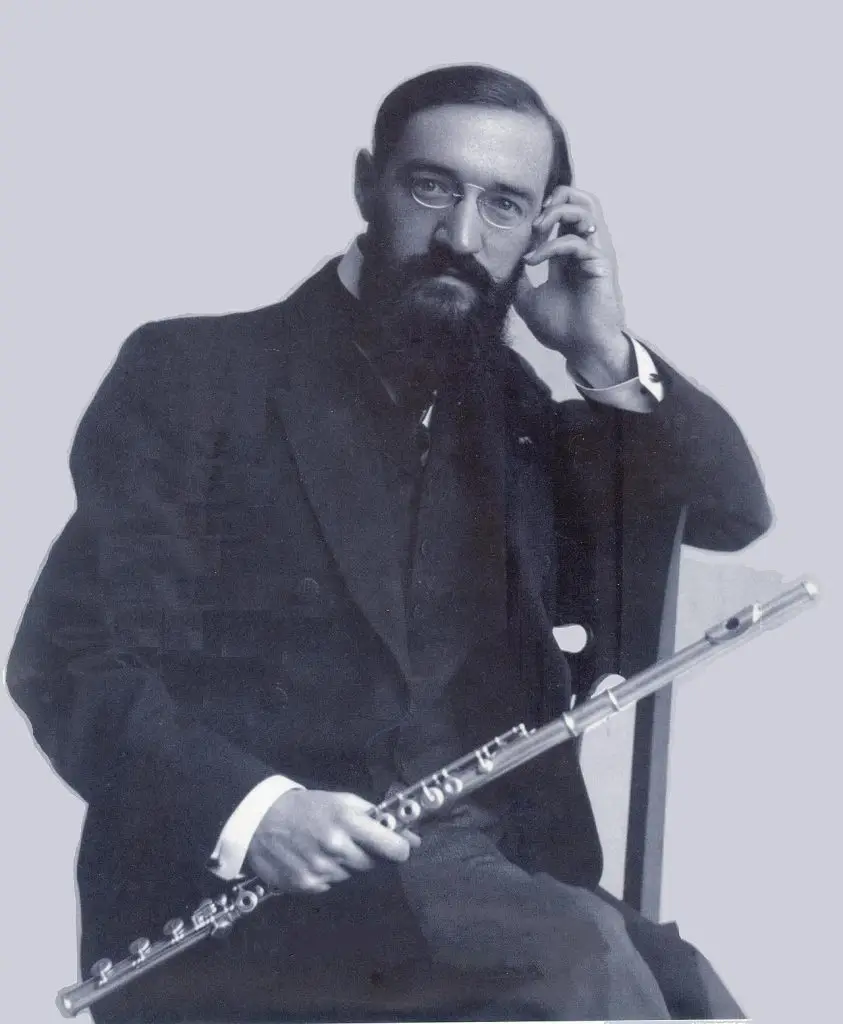
Georges Barrère (1876 – 1944)
Georges Barrère was a transformative French-American flutist, influential in premiering pivotal 20th-century compositions and fostering the flute’s evolution in classical music.
Early Life and Background
Georges Barrère was born in Bordeaux, France, on October 31, 1876. His early life was shaped by modest beginnings, as the son of a cabinetmaker, Gabriel Barrère, and Marie Périne Courtet, a farmer’s daughter. The family moved to Paris in 1879, where Barrère’s musical journey began with a tin whistle, eventually leading him to the prestigious Paris Conservatoire.
Education at the Paris Conservatoire
Barrère’s formal music education commenced under the guidance of Léon Richaud and later, the esteemed flutist and teacher, Paul Taffanel at the Paris Conservatoire. Under Taffanel’s mentorship, Barrère flourished, embracing a more nuanced and analytical approach to music, which culminated in winning the first prize in the conservatory’s annual competition in 1895.
Professional Milestones
Barrère’s professional career was marked by significant milestones, including his participation in the premiere of Claude Debussy’s Prélude à l’après-midi d’un faune in 1894, a pivotal moment in modern music. His contributions to the French musical scene included his involvement with the Société moderne d’instruments à vent, which he organized, and his performances with the Concerts Colonne.
Move to the New World
In 1905, Barrère moved to the United States upon the invitation of Walter Damrosch to join the New York Symphony Orchestra, marking the beginning of an influential American career. He remained a pivotal figure in New York’s classical music scene, contributing to the orchestra and forming the Barrère Ensemble of Wind Instruments and the Little Symphony chamber orchestra.
Contributions to Flute Music and Legacy
Georges Barrère is renowned for his significant contributions to flute music, having premiered key works such as Charles Tomlinson Griffes’ Poem and Edgard Varèse’s Density 21.5, each tailored to his exceptional abilities. His innovative playing style and teaching significantly shaped the development of flute playing in the early 20th century. Barrère passed away on June 14, 1944, in New York, leaving behind a legacy celebrated by many in the classical music world.
Significance to Flute Music
Barrère’s influence on the flute repertoire and performance practice was profound. He introduced new works, influenced composers, and set new standards for flute performance, which have endured in classical music. His role in bridging European and American musical traditions helped to enrich the flute’s role in the orchestral and solo settings, making his contributions invaluable to the development of the instrument’s repertoire and technique.
Birthday of Georges Barrère

